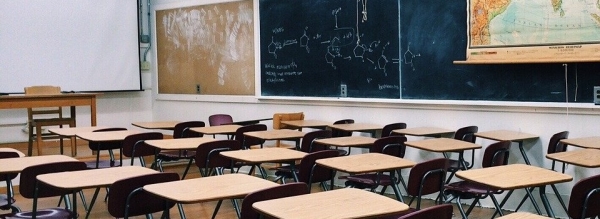Administrators are typically reactionary assessors by nature, waiting for assessment results and then convening with staff to discuss next steps. We should strive instead to be proactive, assessing student growth through formative checks for understanding in real-time in the classroom to aid the learning process and improve student performance. But there’s a hitch.
Picture this: A lesson is off to a great start. Everything is clicking when suddenly the classroom door swings open to reveal the building administrator. The air is sucked out of the room, instruction is interrupted, and all momentum is lost. Sound familiar?
When administrators enter a classroom, students will likely exhibit one of the following behaviours: tightening up out of fear and anxiety or getting so focused on impressing the visitor that all attention to the task at hand is lost. Either way, the teacher’s instruction and lesson pacing are disrupted. This is a big problem: The administrator can’t be sure what students know because they’re not getting an accurate look at the classroom learning environment.
So what’s the solution?
3 TIPS FOR ASSESSING LEARNING—WITHOUT INTERRUPTING IT
1. Forge relationships with students outside of classrooms: Many of us would candidly admit that interactions with administrators in our school days were on par with a sighting of Sasquatch: slim to nonexistent. How much did they really know about us, personally and academically? To what extent did they support our teachers to better reach us instructionally?
Conducting informal conversations to serve as checks for understanding during unstructured times, such as in the hallways or at lunch or recess, can be a great investment in your student population. These interactions not only build meaningful relationships but can allow administrators to truly feel the pulse of a student body in regard to their proficiency levels by asking a simple question: “What have you learned so far today that you didn’t know yesterday?”
Investing in this aspect of human capital diminishes the shock value when an administrator does enter classrooms. Trying the 2x10 strategy—speaking with the same student for two minutes a day, 10 days in a row—will all but eliminate students’ discomfort, which will save instructional time and minimize the disruption during classroom visits. Building relationships with each and every student takes time, but it pays enormous dividends in the long run. Your staff will be deeply appreciative, and your students will feel connected to you and the school.
2. Build trust with staff: Teachers need to be able to trust that your classroom visits and checks for understanding are part of a methodology of supporting their efforts rather than evaluative gotchas. Relationships and trust are at the core of all successful endeavours in a school setting, and every exchange is an opportunity to build a bridge or burn one.
As schools have changed to meet modern demands, the long-established public perception of the stiff and intimidating administrator has remained unchanged, but the current reality is more likely an administrator who values and holds sacred the ability to lead staff to coalesce as a professional learning community and improve student outcomes. Today’s leaders need to shed the old reputation by building a rapport with faculty that is conducive to open and honest conversations.
Leading with the inquiry by keeping the question “What’s best for kids?” at the centre of communication is key. It should be the priority of administrators to find out everything they can about students—through frequent one-on-one conversations with teachers—in order to better serve these learners and to support their teachers in using targeted instructional techniques that improve learning outcomes.
3. Implement the Classroom Greeter role: This student job entails noticing when someone walks into the room and going over to greet them, saying some variation of: “Hi, my name is _____. Welcome to our class. We’re currently studying _____. Would you like to have a seat?” Implementing a Classroom Greeter job in every classroom can help hold students accountable for learning and help teachers not lose instructional pacing.
Usually, this strategy is most effective if the Classroom Greeter sits right by the door so as to not cause distractions. To best gauge the learning of the whole class, it’s best if the Greeter role is constantly changed (week by week, day to day, lesson by lesson, etc.) so that the administrator chats with a student at random, not one picked for the task, like the student doing best in the class.
Implementing these ideas can help administrators get an accurate sense of what students are learning with minimal disruptions when they visit classrooms. And that can help administrators build strong relationships with students and faculty, and transform the overall culture within a school.
By Andrew J. Canlé for www.edutopia.org








